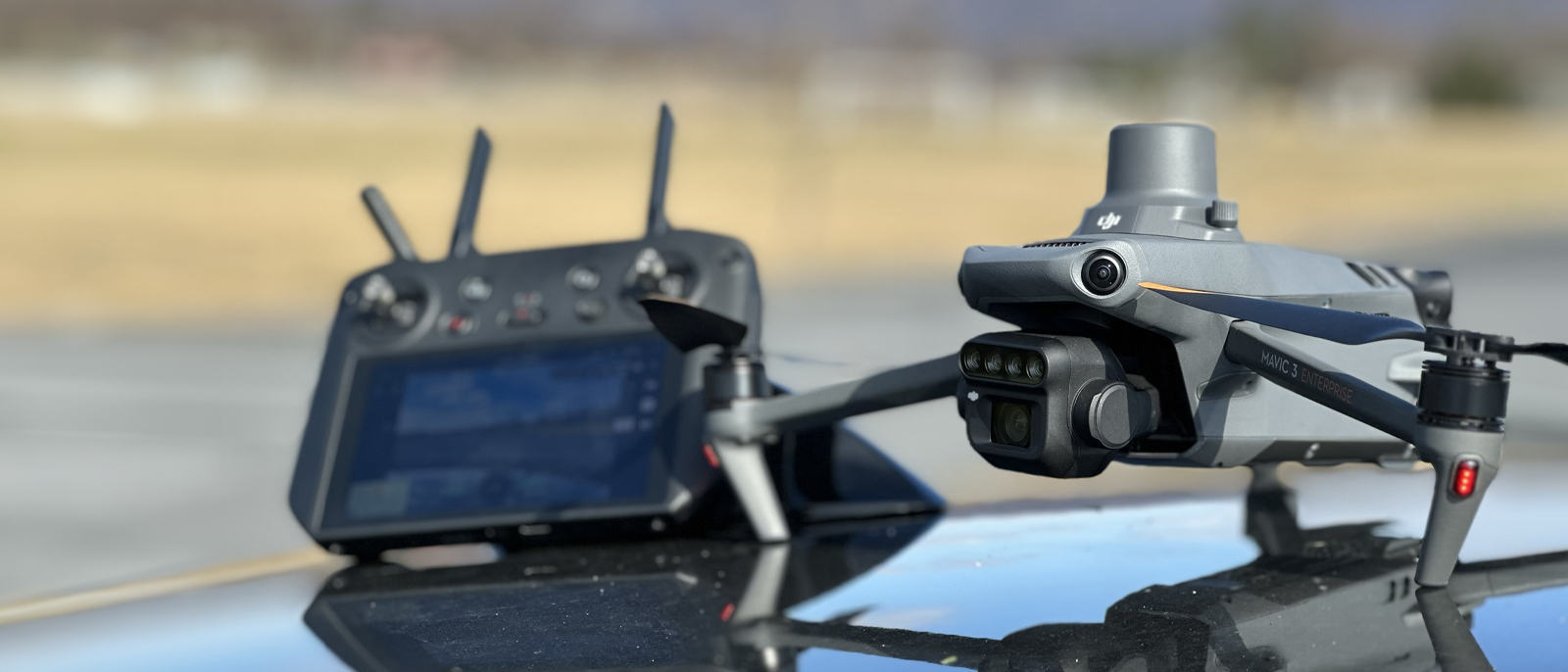“Geospatial Technology” is a collective term referring to technologies that collect, store, query, analyze, visualize, and present spatial information.
There has been a recent explosion in access to spatial data and spatially enabled tools, such as cellular phones, vehicle navigation systems, drone technology, and more. These technologies are also quickly becoming an essential part of our everyday lives. As a result, there is a growing need for a workforce skilled in geospatial technology for a variety of disciplines – including in the environmental, commercial, agricultural, political, social, medical, military, and emergency response fields.
Career Outlook
Industry partnerships for corporate faculty, substantive internships, and project-based use of resources are all core components of the Harrisburg University Geospatial Technology program and are leading factors in preparing graduates for seamless integration into the workforce.
Graduates can go on to local, state, and federal government agencies, and these skilled individuals can be found employed in the private and non-profit sectors in a wide-range of related scientific and technical fields, such as agriculture and soils, archeology, biology, cartography, drone technology, ecology, environmental sciences, forestry and range, geodesy, geography, geology, hydrology and water resources, land appraisal and real estate, medicine, transportation, urban planning and development, and more.
Program Goals
Graduates of the Bachelor of Science in Geospatial Technology program are able to:
- Determine and apply appropriate geographic positioning and data development technologies to collect and accurately aggregate georeferenced observations, events, and features.
- Select and apply the analytical functions of geospatial software tools to support the geographic inquiry process and improve decision support.
- Design and develop geospatial software applications and databases for processing, analyzing, automating tasks, or adding value to geospatial data.
- Demonstrate professionalism within the geospatial technology industry through the application of legal and ethical decision-making, proactive engagement within the professional community, and appropriate professional conduct.
Program Lead
Full Time Faculty
Corporate Faculty
Program Courses
This program requires a total of 47 semester hours. The semester hour value of each course appears in parentheses ( ).
GSTC 130 –
Applied Geography
(3 credits)
This course has three specific ways of looking at the geography of the world: 1) World Geography – where regions of the world are examined based on human and physical features; 2) Applied Geography – which focuses on applying physical and human geography concepts to phenomenon such as environmental, political, and economic; and 3) how modern geospatial technology is changing the way geographic information is studied and used. Laboratory exercise include research and map exercises for world geography, worksheets and diagramming for physical geography exercises, and final project research into a selected applied geography topic of interest to each student.
GSTC 140 –
Introduction to GIS
(4 credits)
This course focuses on the first of three primary Geospatial Technologies, Geographic Information Systems, but also introduces students to Remote Sensing and Global Positioning Systems (GPS). The course includes both lecture on concepts and applications as well as laboratory exercises designed to develop students abilities in core GIS functionality. GIS exercises include spatial data capture, storage, query, analysis display and map output using the industry standard, ArcGIS software. Practical applications of GIS to areas such as environmental analysis, land use planning, emergency management and fundamental mapping techniques. Students finish the course by completing a custom mapping project on a topic of interest to them.
GSTC 210 –
Cartography
(3 credits)
The presentation of data is both an art and a science. The student uses GIS to produce high-quality maps that expose complex spatial information and relationships in a clear and easy-to-understand display. Cartographic concepts and techniques, used to create not only hard copy printed maps but also prepare cartographic data for modern devices such as web pages and digital media, are explored. The class emphasizes laboratory work and a final project that uses GIS from an initial map concept, through data collection and analysis, to a final product.
GSTC 220 –
Applied Geospatial Technology
(4 credits)
This course bridges the gap between the concepts and tools introduced in GSTC 140 and the more advanced functions of ArcEditor/ArcInfo, including spatial operations and data modeling. The student integrates diverse datasets, creates methodologies for data conversion/migration, and develops guidelines for spatial data quality control. The course continues to build competency in alternative GIS software solutions including Open Source GIS. Advanced modules of ArcGIS, including Spatial Analyst and 3D Analyst, will be introduced.
GSTC 240 –
GIS Policy
(4 credits)
Through the use of geospatial technology examples, the current policy on managing data for public administration and public policy is explored. The student will utilize knowledge and skills in geospatial technology to understand the impact and constraints it places on both public and corporate policies. Knowledge of GIS is used to explore emerging public policy, professional standards, ethics, and future directions of geographic data.
GSTC 330 –
Spatial Database Management
(4 credits)
This course is intended for the student who is interested in designing and implementing a spatial database also teaches them to write spatial queries that solve real-world problems through retrieving data from a spatially enabled database. The course is designed to cover the basics of the relational model for database management where data can be accessed and reassembled in different ways that are of relevance to both geographic and non-geographic context, the student will learn a domain-specific language such as Structured Query Language (SQL) to be able to manage data, it also gives the student a solid background in vector, raster, and topology-based Geographic Information System (GIS) in order to be able to analyzing, viewing, and mapping data.
GSTC 340 –
Advanced Spatial Analysis
(4 credits)
This course focuses on critical evaluation of real world case studies to determine the appropriate spatial data and advanced-level geospatial technology and tools to analyze, replicate and improve upon past solutions. The student works independently and in teams to develop and apply geospatial problem solving skills to a range of real world scenarios. The growing requirement for the integration of GIS and 3-D building information modeling (BIM) for use in facilities management and emergency response is explored.
GSTC 450 –
Desktop GIS Development
(4 credits)
This course immerses the student into desktop GIS software design and creation. Building on skills acquired in prerequisites in both GIS and Computer Science, the student uses industry standard tools and technologies to design and create a functioning spatial desktop scripts and applications. The bulk of the classroom time will be spent on practical project in small groups with guidance from the instructor. The student must demonstrate a final project at the end of the semester.
GSTC 460 –
Satellite Remote Sensing
(4 credits)
Remote sensing through the use of satellites and other aircraft is the science of acquiring and analyzing information about feature or phenomena from a distance. Satellite-borne sensors observe, measure and record the electromagnetic spectrum reflected or emitted by the earth and its environment for subsequent analysis and extraction of the information. Applications for satellite remote sensing include military surveillance, oil, insurance, real estate, transportation, city planning, environmental monitoring and other uses. The student works with raster-based satellite and aerial images to manipulate and analyze the electromagnetic signatures gathered from this technology.
CISC 120 –
Programming I
(4 credits)
This course introduces the concepts and techniques of computer programming. Emphasis is placed on developing the student’s ability to apply problem-solving strategies to design algorithms and to implement these algorithms in a modern, structured programming language. Topics include fundamental programming constructs, problem solving techniques, simple data structures, Object-Oriented Programming (OOP), program structure, data types and declarations, control statements, algorithm strategies and algorithm development.
CISC 140 –
Programming II
(3 credits)
This course builds upon fundamental concepts of programming and introduces several more advanced concepts. Emphasis is placed on the practical applications of the techniques and structures, as opposed to abstract theory, in the hopes of rendering the content accessible and useful in the context of using programming as a tool to solve problems. Topics covered include the basics of Object-Oriented Programming (OOP), sorting and searching algorithms, and basic data structures. Offered Fall and Spring Semester, annually.
IMED 265 –
Front-End Web Development
(3 credits)
This course prepares the student for a career in web development. The student will expand their knowledge of the emerging web technologies while applying sound design methodologies to front-end web development. This multifaceted course introduces the student to a variety of web development tools and the role of a web designer focused on user interface design. The student will also spend a large portion of the semester transforming interface designs and wire frames into functioning web sites using Adobe Brackets, HTML, CSS, JavaScript and other web technologies as ncesessary.
MEBA 210 –
Intro to Internet and Web Technol
(3 credits)
The main objective of this course is to introduce the current as well as emerging Internet and Web technologies that enable and drive the modern enterprises. The student is exposed to the key building blocks (enterprise applications, computing platforms, databases, and networks) of the modern Internet-Web infrastructure. Through experiments and examples, the main ideas of the Internet, the ISPs, wireless networks, Classical Web, Semantic Web, XML, Web 2.0, social networking, wireless web, and mobile apps are explained. The course exposes the student to the main apsects of web-based software development processes through simple hands-on projects. The student is introduced to the basic software concepts by developing simple web sites by using HML5 and CSS3 and then using Javascript, Java applets, XML and XSL to introduce more sophisticated features. The student also has an opportunity to develop a simple web portal that involves simple database queries by using SQL.
Get More Information
Questions about our programs? Reach out to a member of our team and get personalized answers.
Apply Now
Create an account and start your free online application to Harrisburg University today.



